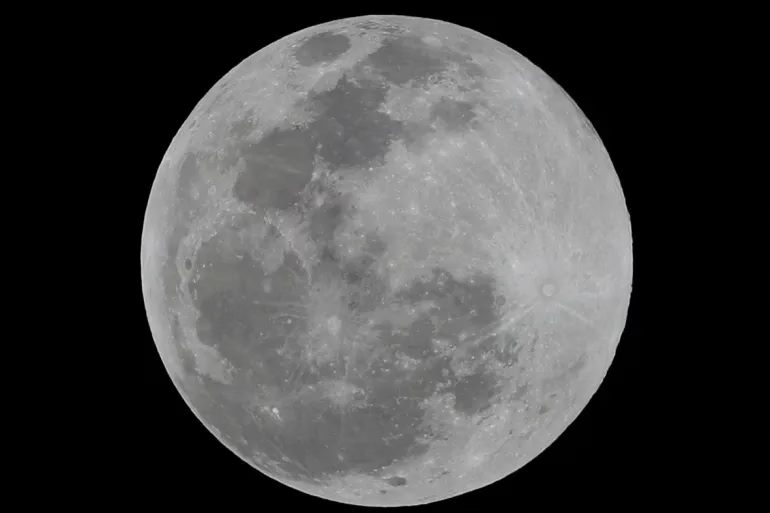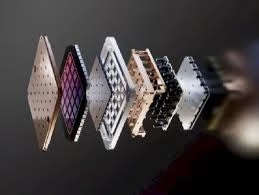1. The Vision: Sustainable Lunar Habitats
China’s ambitious lunar vision centers around the Chang’e 8 mission, tentatively slated for 2028–2029, which aims to pioneer in situ resource utilization (ISRU) by 3D-printing construction bricks using lunar soil (regolith)—a strategic step toward building the International Lunar Research Station (ILRS) on the moon’s south pole (Al Jazeera, Space, Wikipedia).
Al Jazeera reported that China plans to explore this groundbreaking 3D-printing method to enable long-term lunar habitation, moving beyond Earth-dependent infrastructure (Al Jazeera).
2. The Technology: Solar-Powered Regolith Printing
At the heart of the concept lies a solar concentrator system that gathers sunlight and transmits it via fiber-optic cables to heat lunar regolith up to 1,400–1,500 °C, allowing it to melt and be formed into bricks using 3D-printing techniques (Business Today, 3D Printing Industry, China Daily).
The Deep Space Exploration Laboratory in Hefei (Anhui province) has successfully prototyped a 3D printer using only lunar soil as raw material, completely independent of Earth-supplied inputs (China Daily, english.cas.cn).
Complementing this, the team developed “lunar bricks”—test samples created from multiple simulants representing varied lunar compositions. These bricks exhibit strength beyond conventional concrete, and are being tested onboard China’s Tiangong space station to assess durability under radiation, vacuum, and temperature swings (3D Printing, cctvplus.com, Leonard David).
3. Structure & Design: Egg-Shaped Domes
To withstand the Moon’s harsh environment—extreme temperature fluctuations (~–183 °C to +127 °C), cosmic radiation, and prolonged moonquakes—Chinese scientists have proposed an egg-shaped architectural design, dubbed the “Moon Pot Vessel” or “Yuehuzun.”
This double-layer, hollow dome offers thermal insulation, material efficiency, and structural strength, while providing resistance against external pressure and vibrations (The Sun, cctvplus.com, Leonard David).
The proposed construction process is modular: a reinforced foundation is printed first (potentially with injection grouting), followed by inflatable molds over which regolith bricks are laid by robotic printers—layer by layer (cctvplus.com, Leonard David).
4. Testing & Implementation Roadmap
- Chang’e 7 (2026): A reconnaissance mission to the lunar south pole to scout for water ice and assess regolith, logistics, and landing sites (Space, Wikipedia).
- Chang’e 8 (~2028–2029): A pivotal mission to test ISRU technologies, including 3D-printing bricks from lunar soil and deploying robotic assembly systems (Wikipedia, Space, Al Jazeera).
- International Lunar Research Station (ILRS): Envisioned for early 2030s, this multi-national base would house scientific facilities. China, along with partners like Russia, Pakistan, Egypt, South Africa, and others, is targeting a basic operational base by 2035, evolving into a “city-like” model by 2045 (The Sun, Wikipedia).
5. Why It Matters: Lower Costs & New Frontiers
- Economical Construction: Hauling materials to the Moon is outrageously expensive. ISRU, using lunar regolith, cuts costs and logistics drastically (Business Today, cctvplus.com).
- Technological Leap: This effort signifies a fusion of solar thermal technology, additive manufacturing, robotic automation, and materials engineering tuned for extreme environments.
- Global Strategy: China’s efforts underscore its growing role in lunar exploration and infrastructure development, raising the strategic stakes in international space competition (The Sun, Wikipedia).
6. Comparison & Context
China isn’t alone: NASA’s Foster + Partners, ESA, and others are exploring 3D-printed habitats using regolith simulants. Alternative concepts include mycelium-based structures within inflatable domes, pushing forward sustainable lunar architecture (Architectural Digest).
China’s ISRU roadmap also aligns with plans for future human landings post-2030, aiding deeper space travel infrastructure.
Conclusion
China is leaning into the future of lunar construction with bold, technology-rich planning. Beginning with Chang’e 8, the country aims to prove that brick-by-brick lunar construction from native soil is feasible. With innovations in solar-powered 3D-printing, durable egg-shaped dome designs, and rigorous testing on orbit and Earth, this plan lays a formidable foundation for lunar habitation and exploration.
Would you like an accompanying infographic summarizing the mission timeline, technology stack, or comparisons with other lunar habitat proposals?






